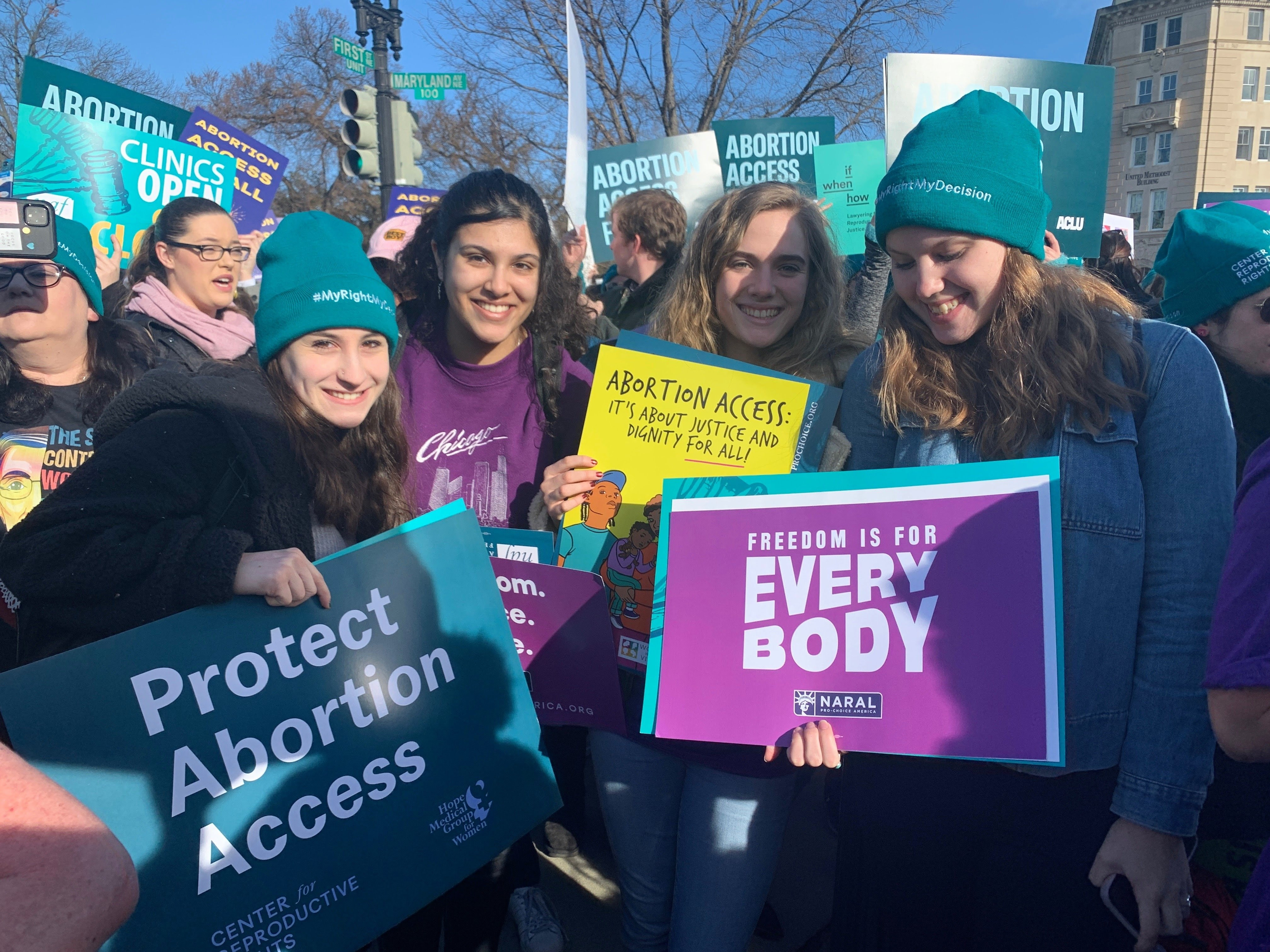Imagining Reproductive Health Care Access in a Post-Roe World

We are facing the end of Roe v. Wade. When I first heard someone say that out loud to me three years ago during a meeting of my student reproductive justice group, I felt that tightness in my chest you get when you are confronted with a fear you’ve been avoiding. What I have learned since that moment is that for many people in the U.S., Roe has essentially been overturned for a long time.
How, you may ask? Abortion access, which Roe made federally legal in 1973, is not available to everyone because of inequities based on race, income, location, and incarceration status. The obstacles people face in obtaining reproductive health care vary wildly and happen in every state, every county, all the time.
While it is upsetting to learn of all the different ways people are denied access to health care, there is a strange comfort in knowing that people in the reproductive justice sphere have been navigating these challenges for years.
So many people have unjustly already experienced the end of Roe, and as a result, are more prepared for it. For this, we have women of color, especially Black women, to thank and support.
The reproductive justice movement was founded in 1994 by Black women in Chicago who decided to create language around the inequities in reproductive health that mainstream white feminism neglected to address. From there, advocacy expanded from fighting for people’s right to get an abortion to making access equitable.
A key component of the reproductive justice movement that inspires me deeply is “intersectionality,” the explicit recognition that there are different, intertwined factors in a person’s life that impact their ability to access health care. The confluence of a number of challenges has meant that access to abortion as a stand-alone right is affected by a tangled mess of factors.
Without intersectionality, it’s like trying to solve a mystery with only one clue — you can’t see the big picture while only focusing on one aspect of the whole story.
For example, ensuring safe access to reproductive health care does not end at the door of the clinic. Research consistently documents that Black women face higher rates of maternal mortality and that Black people are more likely to die of preventable conditions because of a lack of health care access.
Respected studies published in the health policy journal Health Affairs and the Proceedings of the National Academy of Sciences respectively cite racism amongst physicians as a deterrent for Black women in their quest for high-quality reproductive health care.
I learned (rather than experienced) about the realities of disproportionate treatment in health care from friend and community stories, a serious privilege that pushes me to organize against such egregious discrimination.
One story that has stuck with me is of a friend who immigrated to the country and experienced racism when she sought out reproductive health care. The doctor was irritated by the language barrier between the two, resulting in a painful IUD insertion so botched that she had lasting reproductive damage.
Another piece of this equity puzzle is incarceration. This intersection has been on my mind recently because of a panel my student organization co-hosted, where we heard from four resilient women on their experiences with reproductive justice and the justice system.
One formerly incarcerated panelist shared her story about having to make her own tampons because of the limited availability and abysmal quality of the tampons offered to incarcerated women.
Having to make her own, she said, was like playing “Russian roulette” with her health. And upon her release, she had to have an emergency hysterectomy due to severe toxic shock syndrome.
A favorite tactic of those against reproductive rights is to keep these issues taboo so that the realities of these inequities are left out of national conversations. There is also an undeniably personal nature to these experiences, which makes it difficult for those distant from reproductive restrictions to understand their life-altering impact.
As Roe is challenged, and federal abortion access changes, it can feel like there’s not much to be done. Especially if you live in a state where abortion access will be preserved if Roe is overturned, the distance from those in need can feel immense.
One way to minimize that distance is to help people on an individual level. Abortion funds ensure that when clinics close, or when restrictive laws become banned, abortion won’t become more of a privilege than it is already.
A disturbing subtext to the Texas abortion ban, its copycats, and the end of Roe, is that wealthy women will always be able to travel anywhere they need to obtain reproductive health care. Women with low incomes and incarcerated women will not.
While state governments actively work to cement that access gap in place, abortion funds work against them, on a community level.
Fund Texas Choice, one specific to Texas, provides money to people who need to travel to access abortions. The Brigid Alliance is a network of clinics, abortion funds and support organizations to help people travel to obtain abortions nationwide.
These funds are two links in a vast network of organizations built to help make abortion accessible to everyone, no matter the politics of their state, their income or the systemic injustices they face.
As the wave of abortion bans and anti-choiceness washes over America, find peace and join up with the people on the ground who know how to weather the storm.
Written by Samantha Millar, a communications assistant at Burness. Twitter: @thatsamantham